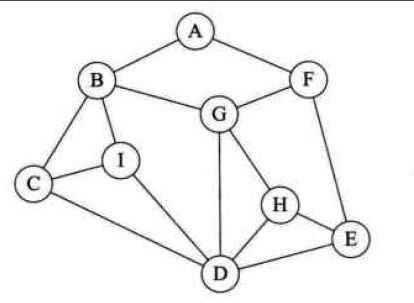标签:style blog http color io for sp 文件 数据
通过整数下标访问的table中的元素,即是数组,下标默认从1开始。
一个创建二维数组的例子:
mt = {} for i = 1, 10 do mt[i] = {} for j = 1, 10 do mt[i][j] = 0 end end
list = nil list = {next=list, value="world"} list = {next=list, value="hello"} local l = list while l do print(l.value) l = l.next end
queue = {} function queue.new() return {first=0, last=-1} end function queue.push(q, val) local last = q.last + 1 q.last = last q[last] = val end function queue.pop(q) local first = q.first if first > q.last then error("queue is empty") end local val = q[first] q[first] = nil q.first = q.first + 1 return val end q = queue.new() for i=1,10,2 do queue.push(q, i) end for i=q.first,q.last do print(queue.pop(q)) end
类似于python的set结构,例如:
function set(list) local s = {} for _, n in ipairs(list) do s[n] = true end return s end reserved = set{"beijing", "xian"} reserved.beijing -- true reserved.shanghai -- nil
假如需要读取一个文件的内容,常用的方式如下:
local buff = "" for line in io.lines() do buff = buff .. line .. "\n" end print(buff)
假设每行有20 bytes,已读了2500行,那么buff现在就是50000B,当Lua做字符串连接时,就新建一个50020B的新字符串,并从buff中复制了50000B到这个新字符串。这样,对于后面的每一行,Lua都需要移动更多的内存,显然,这样做效率是比较低的。
下面是一个改进的版本,利用table做缓冲,最后利用table.concat将所有行连接起来:
local t = {} for line in io.lines() do t[#t+1] = line end local s = table.concat(t, ‘\n‘)
那么问题来了,concat的内部工作原理是什么呢,它在连接字符串的时候如何做到高效运行呢?
将每次需要连接的字符串压入堆栈,如果新加入的字符串比栈顶字符串更大,就将两者连接。然后,再将连接后的新字符串与更下面的字符串比较,如果是新建字符串更长的话,则再次连接它们。这样的连接一直向下延续应用,直到遇到一个更大的字符串或者达到了栈底。
function NewStack() return {""} end function push(stack, s) table.insert(stack, s) for i = table.getn(stack) - 1, 1, -1 do if string.len(stack[i]) > string.len(stack[i+1]) then break end stack[i] = stack[i] .. table.remove(stack) end end local s = NewStack() for line in io.lines() do push(s, line .. "\n") end
下面是一个广度优先遍历有向图的例子,其中raw描述了图的所有边,每个边有两个点——起点、终点。
用了一个table来表示点,它有两个字段,name和adj,name表示该点的名称,adj表示它的终点。

raw = { {‘A‘,‘B‘}, {‘A‘,‘F‘}, {‘B‘,‘C‘}, {‘B‘,‘I‘}, {‘B‘,‘G‘}, {‘F‘,‘G‘}, {‘F‘,‘E‘}, {‘C‘,‘I‘}, {‘C‘,‘D‘}, {‘I‘,‘D‘}, {‘G‘,‘H‘}, {‘G‘,‘D‘}, {‘H‘,‘E‘}, {‘H‘,‘D‘}, {‘E‘,‘D‘}, } local function name2node(graph, name) if not graph[name] then graph[name] = {name=name, adj={}} end return graph[name] end local function readgraph() local graph = {} for _,v in pairs(raw) do local namefrom, nameto = v[1], v[2] local from = name2node(graph, namefrom) local to = name2node(graph, nameto) from.adj[to] = true end return graph end function findpath(curr, to, path, visited) path = path or {} visited = visited or {} if visited[curr] then -- no path return nil end visited[curr] = true path[#path+1] = curr if curr == to then -- be found return path end for node in pairs(curr.adj) do -- recursive local p = findpath(node, to, path, visited) if p then return p end end path[#path] = nil end function printpath(path) for i=1, #path do print(path[i].name) end end g = readgraph() a = name2node(g, ‘A‘) b = name2node(g, ‘D‘) p = findpath(a, b) if p then printpath(p) end
打印一个lua对象:
function serialize(o) if type(o) == "number" then io.write(o) elseif type(o) == "string" then io.write(string.format("%q", o)) elseif type(o) == "table" then io.write("{\n") for k,v in pairs(o) do io.write(" ",k," = ") serialize(v) io.write(",\n") end io.write("}\n") else error("cannot serialize a " .. type(o)) end end local l = {name=‘cq‘, 5, like={‘movie‘, ‘music‘}} serialize(l)
输出内容:
{ 1 = 5, name = "cq", like = { 1 = "movie", 2 = "music", } , }
标签:style blog http color io for sp 文件 数据
原文地址:http://www.cnblogs.com/chenny7/p/4048699.html